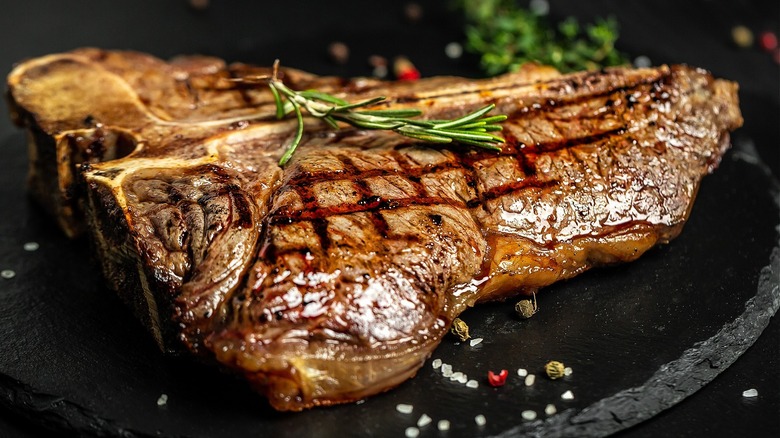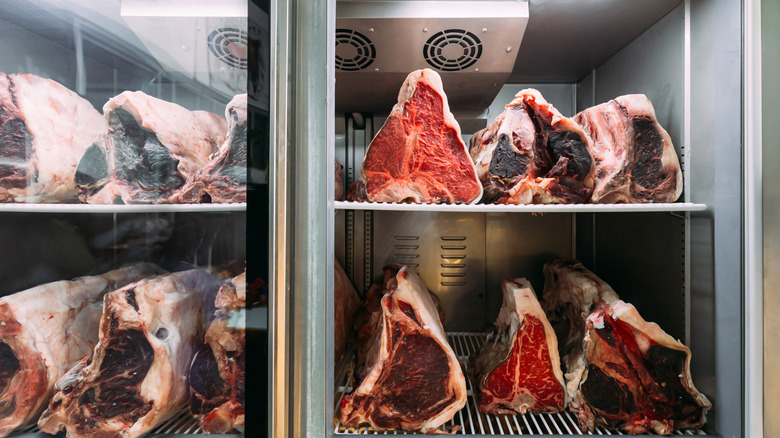The Best Umami-Boosters To Brush On Meat Before Dry-Aging
You may have noticed beef labeled 'dry aged' in the butcher cases and on steakhouse menus next to a hefty price tag and wondered what the big deal was. Dry-aged beef is a preservation process where beef is left uncovered for days to weeks in a controlled environment. The extended rest period slowly draws moisture from the meat, affecting the beef's flavor, aroma, and texture. While salting a steak only penetrates the surface, dry-aging works on a cellular level, breaking down the muscle fibers, fat and connective tissues, concentrating the 'beefiness,' and creating a more tender cut per America's Test Kitchen.
Although butchers and meat purveyors have a designated aging room with regulated temperatures, controlled humidity, and consistent airflow, the process can be done at home under the proper conditions. Meat simply left out in the refrigerator may promote 'bad' bacteria growth, which can cause food-borne illnesses. Done right, dry-aging encourages the development of 'good' bacteria, which, according to MasterClass, "oxidize the meat's fatty outer layer, locking in moisture and flavor and creating a barrier that blocks out undesirable bacteria." While 7 to 14 days is recommended for first-time dry-agers, a month is considered the optimal time for a bold-flavored, tender steak.
Sea salt is often sprinkled on the beef before dry-aging to allow the meat's natural flavors to shine; however, for an umami-boosting meal (like a natural MSG), try brushing on this mixture first and take your steak to the next level.
Steakhouse caliber steaks
To dry-age steak at home, MasterClass suggests rinsing and drying the meat before seasoning and wrapping the cut in cheesecloth. While salt will do the trick, for an extra shot of a meaty, salty, savory flavor, Food and Wine's Jonah Reider brushes a mixture of umami-packed ingredients like soy sauce and anchovy paste, with crushed black peppercorn and grated garlic.
Like beef, soy sauce and anchovy paste naturally contain the amino acid glutamate, which according to Healthline, signals your mouth to salivate and the body to get ready to eat. Reider cautions against using oil in any seasoning during the dry-aging process since it will prevent the moisture from evaporating from the beef. Place the seasoned dry-aged beef in the refrigerator on a wire rack, with a tray underneath to collect any liquid. It's preferable to dedicate one to this process since opening the frig before the beef has aged will affect the environment and, therefore, the process. Once the desired results are achieved, remove the hard layer encrusting the meat with a sharp knife. The dehydrated surface is quickly and properly seared on a grill or stovetop when ready to cook.
Searing steak produces that browned crust we want and is the product of the Maillard reaction, the chemical process responsible for the new color, aroma, and depth of flavor created when dry proteins are cooked over high heat. The dehydrated and seasoned meat makes steakhouse quality meat easy to achieve at home, per Science of Cooking.

